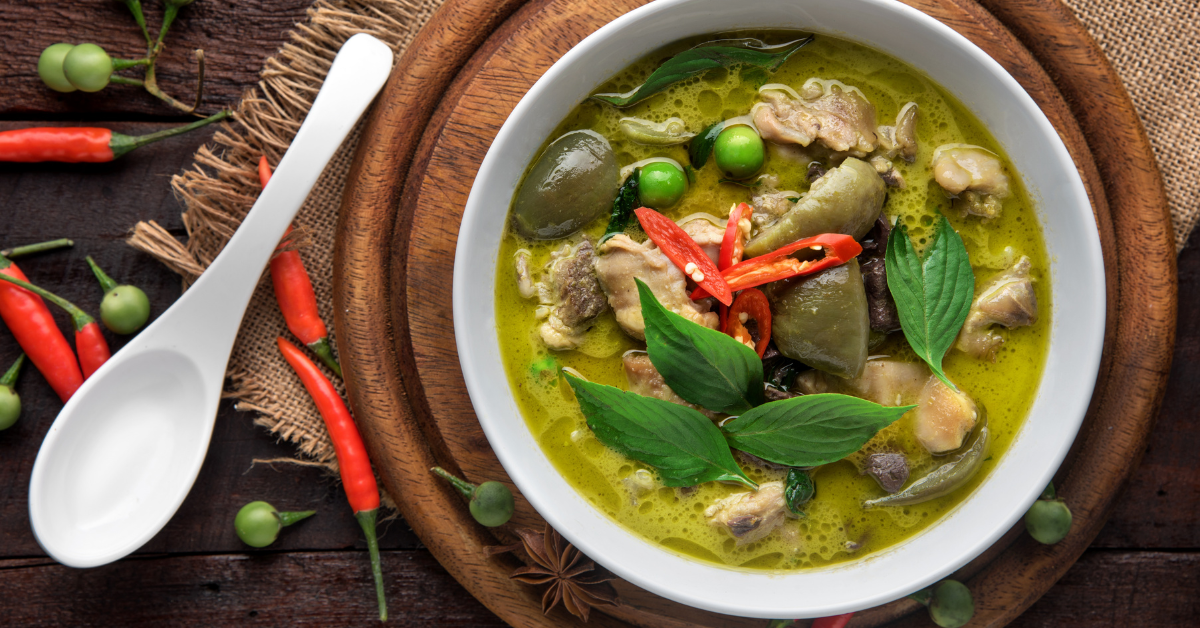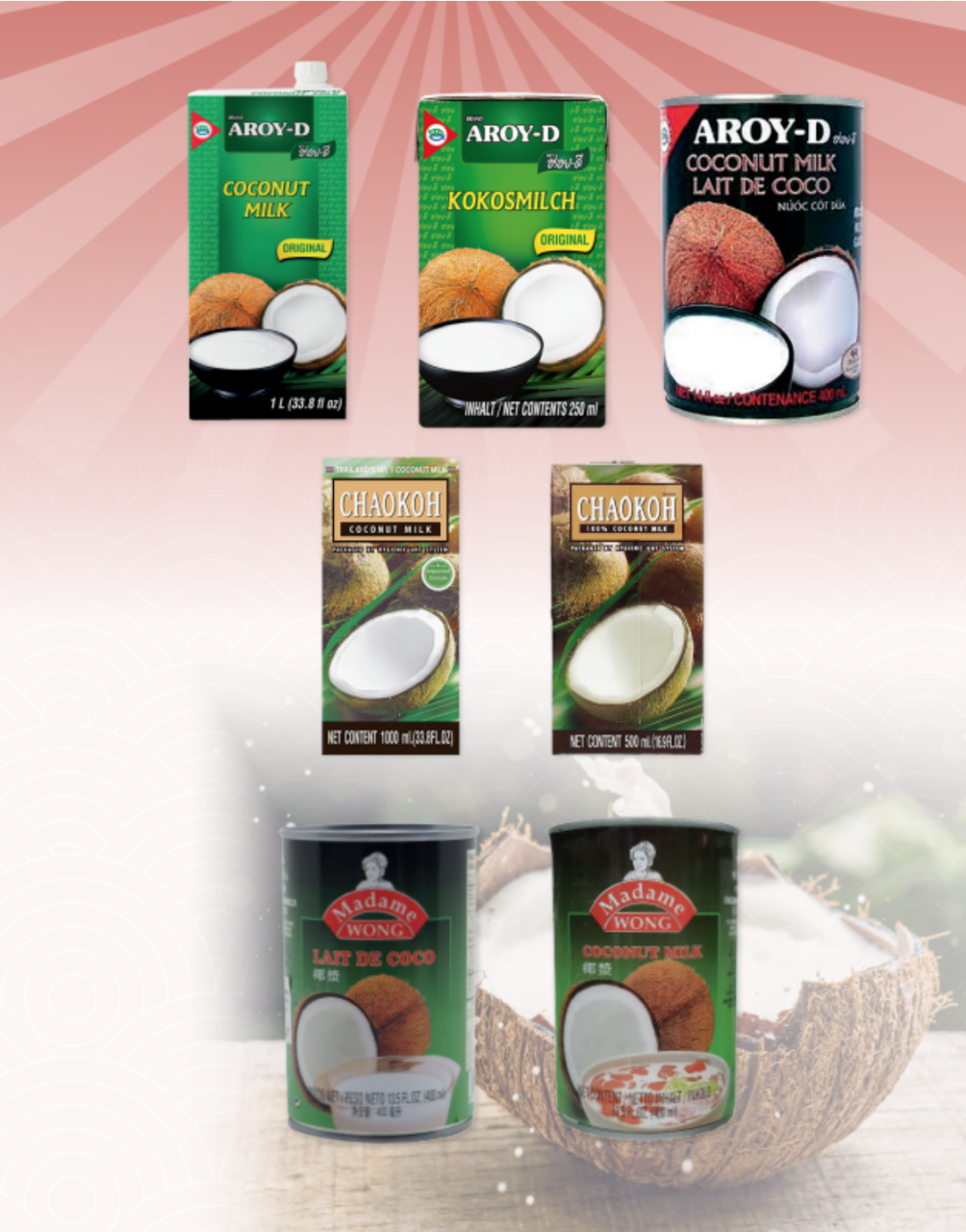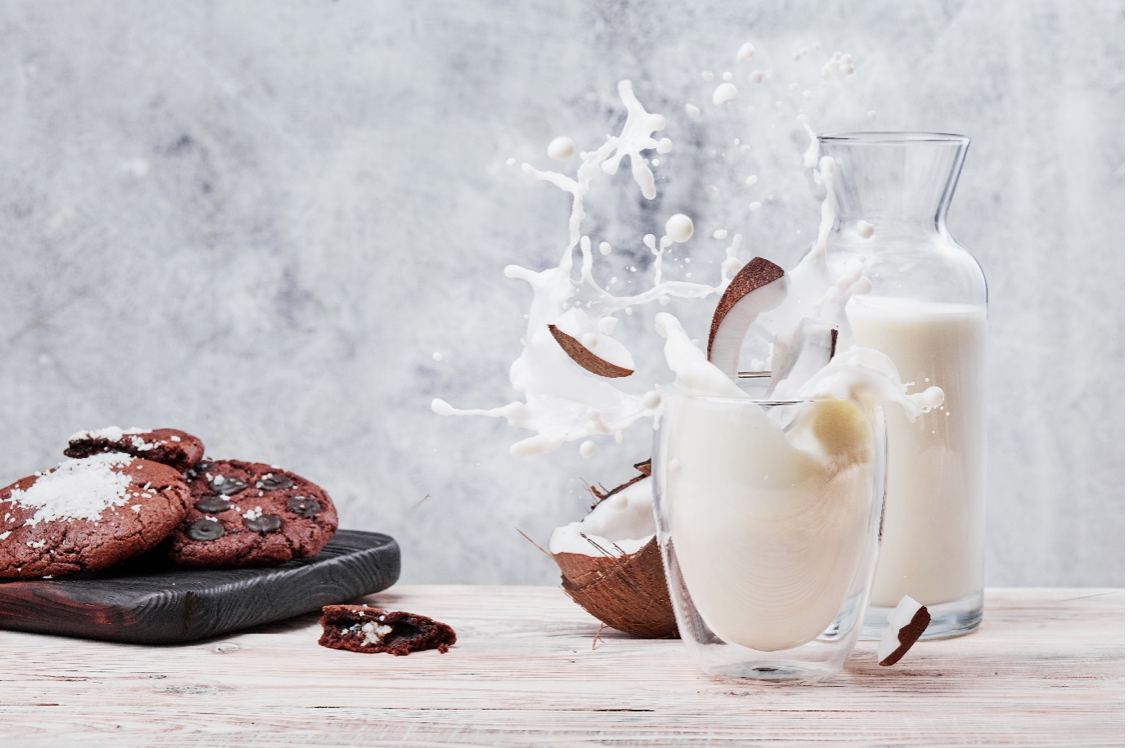Nederlands
English
Deutsch
Français
Coconut milk is a versatile and widely used ingredient that originally hails from Southeast Asia but is increasingly gaining popularity worldwide. This creamy liquid is derived by pressing coconut flesh. For centuries, coconut milk has played a central role in various culinary traditions and recipes. In this article, we delve into the complete picture of coconut milk, providing you with insights if you are considering purchasing or using coconut milk.
After reading this article, you will know everything about:
Despite its name, coconut milk is not a dairy product. The liquid is obtained by grating coconut flesh and mixing it with warm water. This mixture is then pressed to extract the milky liquid. The result is a rich, creamy substance with a distinct coconut flavor.
What sets coconut milk apart from coconut water is its thickness and consistency. Coconut milk has a fuller texture and is often used to create a creamy base for soups, sauces, curries, and desserts. Additionally, coconut milk serves as a source of (healthy) fats.
Southeast Asia is the cradle of coconut milk, as coconut palms have been abundant in the region for centuries. In countries like Thailand, Indonesia, and the Philippines, coconut milk is a crucial ingredient in daily dishes.
For instance, in Thai cuisine, coconut milk is used in curries and soups. Indonesians incorporate coconut milk into Nasi Goreng, and the Filipino cuisine uses coconut milk in dishes like Laing, a vegetable stew.
While the origin of coconut milk lies in Southeast Asia, the product has found its way into kitchens worldwide. In Caribbean cuisine, coconut milk is often used in dishes like coconut rice and curries with fresh fish or chicken. In Latin America, you’ll find coconut milk predominantly in soups and stews.
Globalization and growing interest in diverse culinary traditions have made coconut milk a beloved ingredient, especially in vegetarian and vegan dishes. It is frequently used as a dairy alternative.

The production process of coconut milk begins with harvesting coconuts, which grow on coconut palms. These tall trees form clusters of coconuts. Harvesters often climb the palm trees to harvest ripe coconuts using long sticks or manual methods. The coconut must be fully ripe for optimal taste and texture of the resulting coconut milk.
Once harvested, the coconut is opened, and the white flesh is carefully separated from the shell. The flesh is then grated or ground into fine coconut flakes. To obtain coconut milk, warm water is added to the coconut flakes. This mixture undergoes a pressing process to extract the milky liquid. The more pressing and filtering, the thicker and richer the coconut milk.
Another method to separate coconut milk is by mixing coconut flakes with cold water and letting the mixture rest. The cream rises to the top and can be skimmed off, while the liquid at the bottom can be used as a thinner variant or discarded.
The popularity of coconut milk has led to various variants available on the market, each suitable for specific applications.
Each of these variants has its unique characteristics and is suitable for various culinary creations, making coconut milk a versatile ingredient that easily adapts to kitchens worldwide.

Coconut milk is not only a culinary delight but also offers a substantial amount of nutrients, including vitamins, minerals, and fats.
Per 100 grams, coconut milk contains approximately 230 to 250 calories. Although it is relatively calorie-dense, the calories provide a significant amount of energy, especially for those seeking alternatives to dairy products.
Coconut milk is known for its fat content, primarily consisting of saturated fatty acids.
Coconut milk also contains vitamins and minerals, including vitamin C, vitamin E, vitamin B1, B3, B6, and folate.
Minerals found in coconut milk include iron, magnesium, potassium, phosphorus, and zinc. Potassium is especially valuable as it helps regulate healthy blood pressure.
In the kitchens of Southeast Asia, coconut milk is an indispensable ingredient. Especially in curries, where it creates a deliciously creamy base. Think of Thai green curry with chicken or the Malaysian rendang, where coconut milk enhances the spicy flavors.
Soups are another domain where coconut milk is often present. Tom Kha Kai is a popular Thai soup with chicken and coconut milk. In the Philippines, Bicol Express uses coconut milk, a spicy pork stew.
For those with a sweet tooth, coconut milk comes to the rescue for desserts. Indonesian dadar gulung and Malaysian pulut inti are excellent examples of fantastic desserts with coconut milk.

Especially in the last decade, coconut milk has emerged as a highly praised dairy substitute. For those who are lactose intolerant, follow a vegan diet, or simply seek alternatives, coconut milk provides a perfect choice.
Coffee enthusiasts, for example, can add a splash of coconut milk to their coffee. Smoothies get a tropical twist with a dash of coconut milk, and cereals can be enriched with coconut flakes.
Baking enthusiasts can also benefit from coconut milk as a dairy substitute. It can be used in cakes, muffins, and even in cream fillings.
A notable development in the coconut milk industry is the growing focus on sustainability and transparency. Consumers increasingly value ethical production practices, and producers are responding by embracing certifications such as organic, Fairtrade, and Rainforest Alliance. This development goes hand in hand with the growing demand for environmentally friendly and ethically responsible products.
When comparing the ingredients and quality of different coconut milk brands, it is essential to look at the following factors:
Mooijer-Volendam offers an extensive range of coconut milk and coconut cream. You can find 12 packs of one liter, 24 cans of 400 milliliters, 24 packs of 500 milliliters, or 36 packs of 250 milliliters. Additionally, we provide various brands and types of coconut milk. In other words, for reliable procurement of quality coconut milk, Mooijer-Volendam is the right place to be.